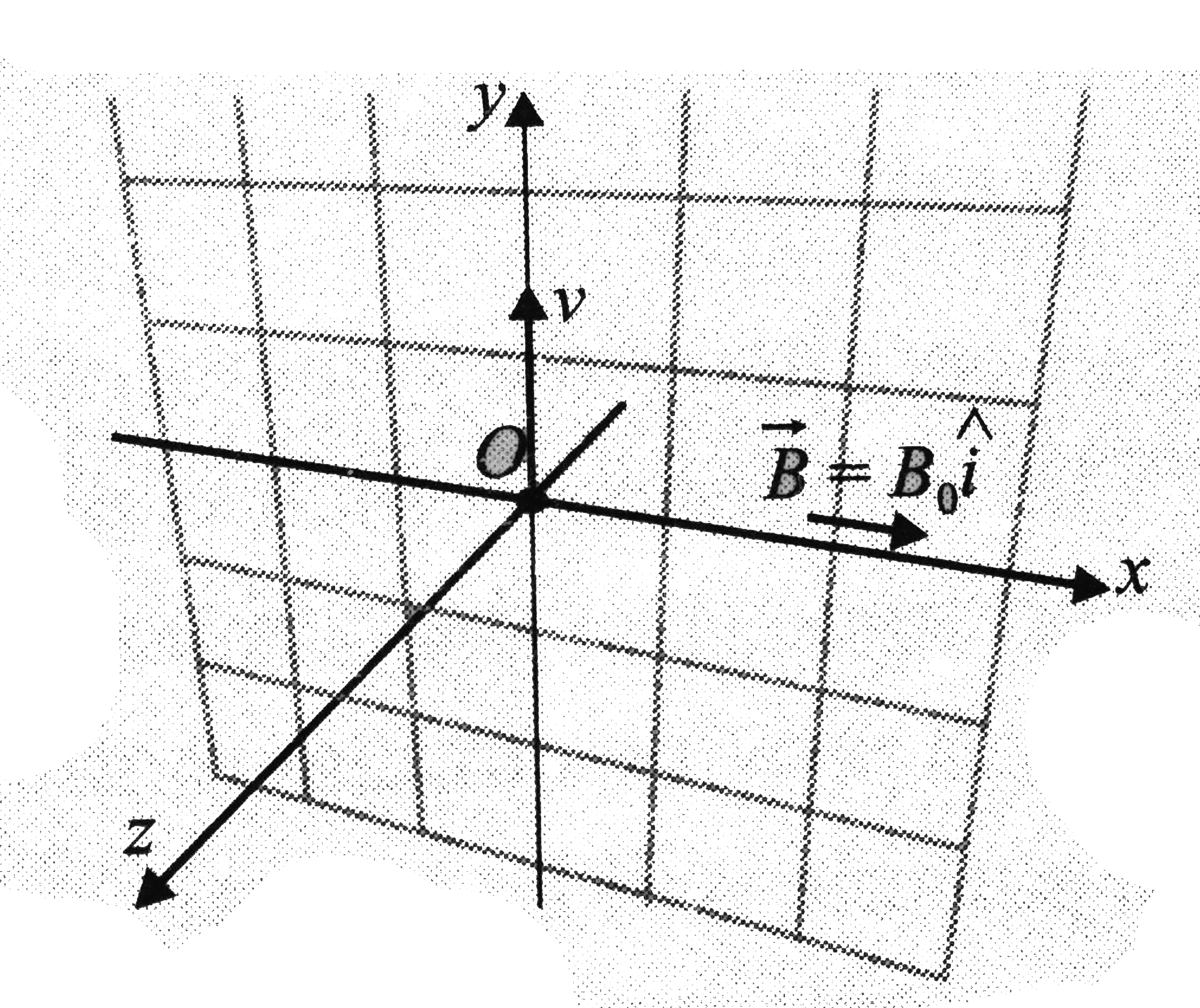If in previous illustration, The charge particle is projected at angle α with x-axis with magnitude of velocity. Find
a. velocity vector in function of time →v(t).
b. position vector in function of time →r(t).

We can make components of the velocity of the particle along x-axis and y-axis. The component which is along the magnetic field will remain unchanged. But the component perpendicular to the magnetic field will provide circular motion. In a combined way, the path of the particle will be helical.

The component of velocity parallel to magnetic field
v∣∣=vcosα
The component of velocity perpendicular to magnetic field
v⊥=vsinα
The y and z components of velocity and position vector can be calculated in the same way as in previous illustration. The only difference is in place of v we substitute v⊥. Hence, velocity vector [→v⊥(t)] in function of time can be writtens as
→v⊥(t)=v⊥cos.qBmtˆj−v⊥sin.qBmtˆk
Hence net velocity
→v=v∣∣ˆi+v⊥cos.qBmtˆj−v⊥sin.qBmtˆk
And position vector in function of time
→r(t)=v∣∣tˆi+Rsin.qBtmˆj−R(1−cos.qBtm)ˆk.
Topper's Solved these Questions
- MAGNETIC FIELD AND MAGNETIC FORCESBOOK - CENGAGE PHYSICSCHAPTER - MAGNETIC FIELD AND MAGNETIC FORCESEXERCISE - Solved Example
25 Videos
- MAGNETIC FIELD AND MAGNETIC FORCESBOOK - CENGAGE PHYSICSCHAPTER - MAGNETIC FIELD AND MAGNETIC FORCESEXERCISE - Exercise 1.1
22 Videos
- KINETIC THEORYBOOK - CENGAGE PHYSICSCHAPTER - KINETIC THEORYEXERCISE - Question Bank
31 Videos
- Magnetism and MatterBOOK - CENGAGE PHYSICSCHAPTER - Magnetism and MatterEXERCISE - Question Bank
50 Videos
Similar Questions
A charge particle of mass m and charge q is projected with velocity v along y-axis at t=0.

Find the velocity vector and position vector of the particle →v(t)and→r(t) in relation with time.
View SolutionA particle is projected with velocity u at angle θ with horizontal. Find the time when velocity vector is perpendicular to initial velocity vector.
View Solution
Knowledge Check
A particle I projected at an angle of elevation α after time t it makes an angle βwith horizontal. The velocity of projection is
A2gtcosβsin(α−β)Bgtcosβsin(α−β)Cgt2sin(α−β)D4gtsin(α−β)A projectill is projected at an angle (α>45∘) with an initial velocity u. The time t, at which its magnitude of horizontal velocity will equal the magnitude of vertical velocity is :-
At=ug(cosα−sinα)Bt=ug(cosα+sinα)Ct=ug(sinα−cosα)Dt=ug(sin2α−cos2α)The velocity vector of the motion described by the position vector of a particle, r=2tˆi+t2ˆj is given by
Av=2ˆi+2tˆjBv=2tˆI+2tˆjCv=tˆi+t2ˆjDv=2ˆi+t2ˆj
A particle travels so that its acceleration is given by →a=5costˆi−3sintˆj. If the particle is located at (−3,2) at time t=0 and is moving with a velocity given by (−3ˆi+2ˆj). Find
(i) The velocity [→v=∫→a.dt] at time t and
(ii) The position vector [→r=∫→v.dt] of the particle at time t(t>0).
View SolutionA particle is projected from ground at angle 45∘ with initial velocity 20(√2)m/s. Find
(a)change in velocity,
(b)magnitude of average velocity in a time interval from t=0 to t=3s.
View SolutionA radius vector of a particle varies with time t as r=at(1−αt), where a is a constant vector and α is a positive factor. Find:
(a) the velocity v and the acceleration w of the particles as functions of time,
(b) the time interval Δt taken by the particle to return to the initial points, and the distance s covered during that time.
View SolutionA particle is projected with a speed v and an angle θ to the horizontal. After a time t, the magnitude of the instantaneous velocity is equal to the magnitude of the average velocity from 0 to t. Find t.
View SolutionA particle of specific charge qm=πC/kg is projected from the origin towards positive x-axis with a velocity of 10m/s in a uniform magnetic field →B=−2ˆkT. The velocity →v of particle after time t=112s will be (in m/s)
View Solution
